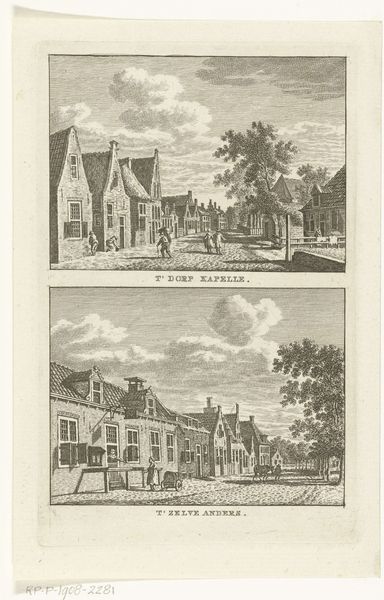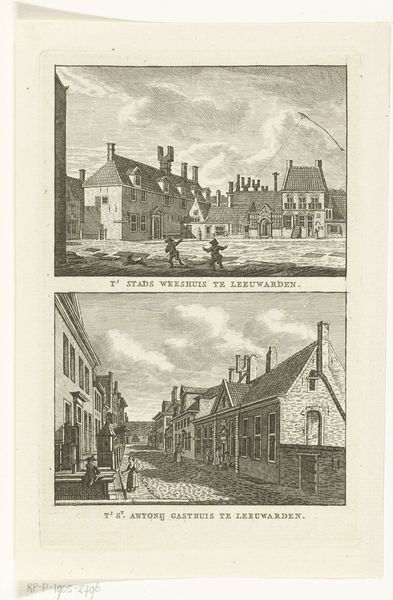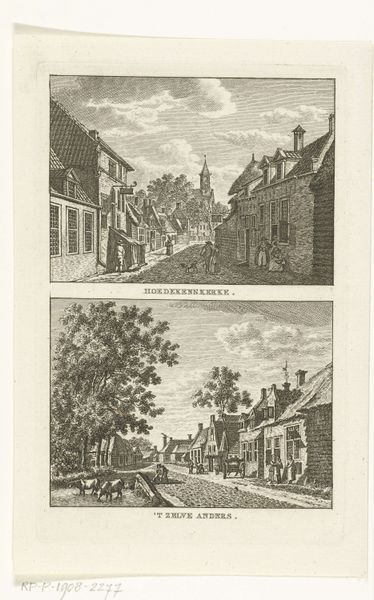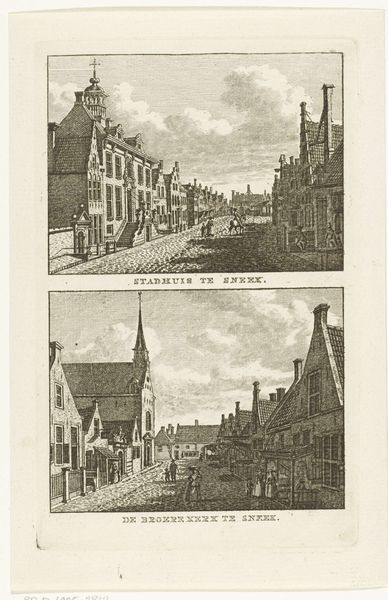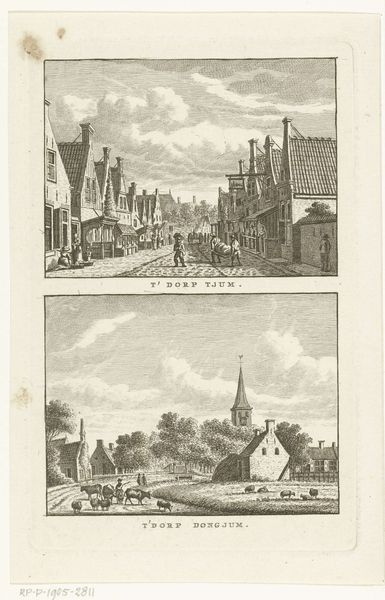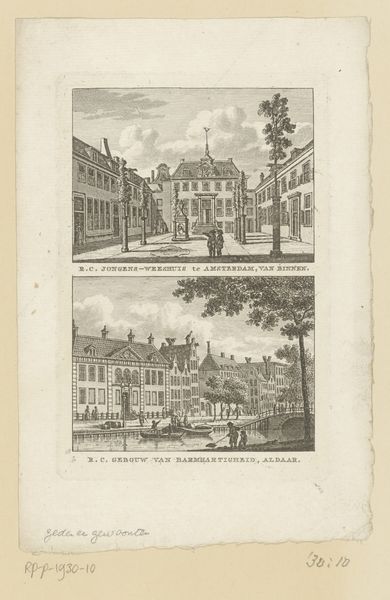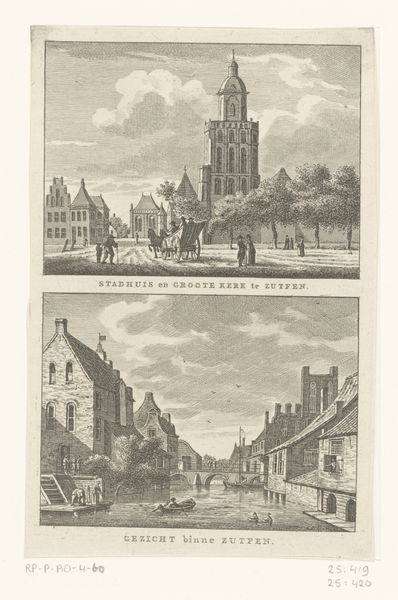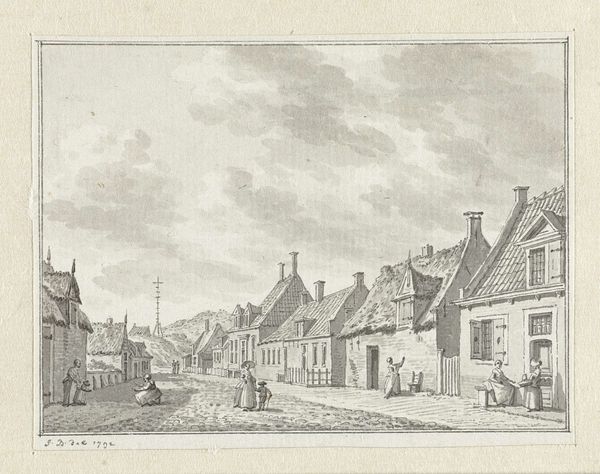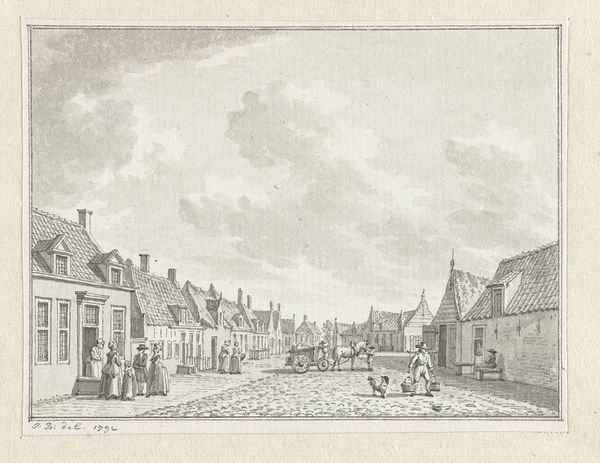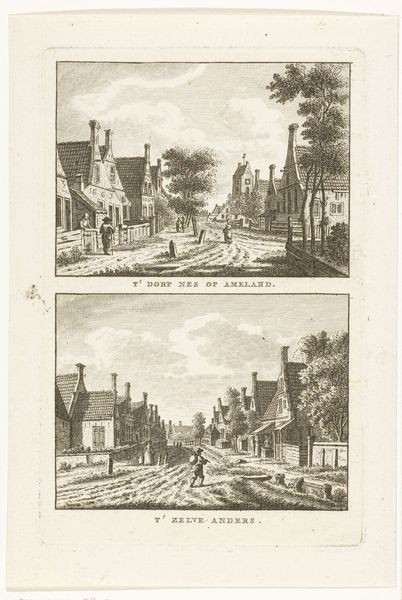
print, engraving
#
dutch-golden-age
# print
#
old engraving style
#
traditional media
#
landscape
#
line
#
cityscape
#
engraving
Dimensions: height 170 mm, width 110 mm
Copyright: Rijks Museum: Open Domain
Curator: Welcome! Before us is "Twee dorpsgezichten te Beetsterzwaag en Wolvega," two village views by Carel Frederik Bendorp, dating from between 1786 and 1792. Both are rendered in a delicate engraving technique. Editor: My initial impression is the remarkable stillness despite the activity shown in both village squares. There's a sense of captured calm. The texture looks very consistent, probably due to the linear quality of the engraving. Curator: Precisely. Bendorp's meticulous approach reveals much about the Dutch countryside's evolving social landscape during this period. Notice the details in the architecture; they reflect a society with growing aspirations toward order and prosperity. These weren't just rural scenes, they were stages of civic life. Editor: I find the focus on buildings interesting. The craftsmanship involved, the specific choice of brickwork. This print offers clues about construction methods and material availability, not just aesthetics. Were prints like these for tradesmen, maybe? Curator: Good question. Their purpose was manifold: records for administrative and political visibility; dissemination of Dutch identity; saleable items in the growing art market, enabling wider society access to artistic expression previously exclusive to nobility. Editor: So, both social documentation and market commodity. But also, what was the artist using to make the work – copper plates, acids to etch, the skill and time of the engraver – all very specific material conditions shaped the image and impacted consumption. Curator: Certainly. Moreover, these prints served as powerful vehicles for shaping a collective memory. The villages presented were idealised, portraying a harmonious community for example while obscuring underlying social tensions that did indeed exist. Editor: It's an interesting paradox: the manual, material labour of the printing press seemingly offering 'objective' depictions but also reinforcing a particular worldview. It makes you think about labor relations implicit in its production, the materials involved, and how these limited distribution but also shaped perceptions. Curator: Indeed. Considering this work prompts reflection upon art as social artifact; the interplay of vision, labour, and wider circulation of ideals and societal norms that continue even today. Editor: Absolutely, viewing "Twee dorpsgezichten" reminds us that even the seemingly simple scenes carry the weight of material processes, market demands, and the ideologies they perpetuate.
Comments
No comments
Be the first to comment and join the conversation on the ultimate creative platform.
